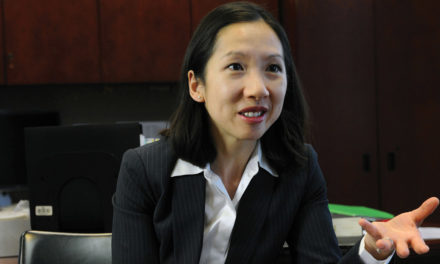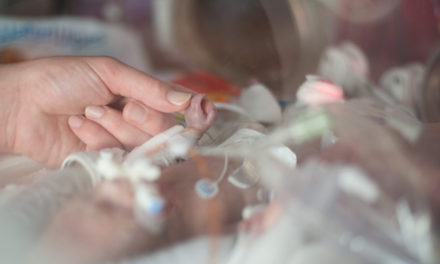For decades, we’ve seen the heart- touching pictures and heard the gut-wrenching stories—from Africa to Asia, from Latin America to Eastern Europe. Countries ravaged by poverty, hunger, war and disease. Millions of children who’ve lost one or both parents, desperately needing help just to get by, let alone thrive.
And for decades, we’ve responded—Americans in general and Christians in particular. Many of us have sent our money to support the children. Some of us have adopted them and brought them to our homes.
Churches have been especially active: Hundreds, if not thousands, of them have set up orphan-care ministries, sending aid abroad and helping cover adoption costs for prospective parents at home.
But in the last few years, orphan-care groups say, we’re changing how we respond—redirecting resources from orphanages toward long-term solutions.
“As a culture, we’ve spent years trying to put Band-Aids on the orphanage institution,” Elizabeth Styffe—then-director of the Orphan Care Initiative at California’s Saddleback Church—wrote in Ministry Today in 2013.
“But children need more than food, shelter, clothing and education. We don’t want children to just survive, but to thrive—and children thrive in family.”
That’s a theme many orphan-care groups, both faith-based and secular, have increasingly stressed in their efforts. And it’s one sounded by Max McGhee, the current Orphan Care manager at Saddleback Church.
“The work we do can be summed up in one simple sentence,” he tells Citizen. “Find a family for every child, and equip the church to care for them.”
But while that family may be an adoptive one, far more often it’s the children’s birth family—a surviving parent or relative.
“Orphan prevention almost always is far better than orphan adoption,” says Dawn Davenport, executive director of Creating a Family, an infertility and adoption-
education nonprofit based in Brevard, N.C. “Whenever possible, we want to keep widows and orphans together.”
Doing that is far from a simple task, however. It means implementing hard-learned lessons over the years about the factors separating parents and children in the first place. It also means finding ways both to bring them back together—and to help them attain a standard of living that lets them stay together.
Root Problems
By UNICEF’s most recent estimates (2015), there are nearly 140 million orphans in the world—including 61 million in Asia, 52 million in Africa, 10 million in Latin America and the Caribbean, and 7.3 million in Eastern Europe and Central Asia.
The vast majority of these children are what orphan-
care workers call “single orphans”—those who have lost one parent. But there are also 15.1 million “double orphans” have lost both parents. Most orphans are living with a surviving parent grandparent, or other family member, the agency says.
Of those remaining orphans, what has separated them from their birth families? The answers vary from case to case and from country to country. But generally speaking, the reason often is because the surviving parent—more often than not, the mother—feels giving up her child is her only option.
“A lot of them have the misconception that an orphanage might provide a better life for a child,” McGhee says. “If you’re very impoverished, if you can’t afford food or school for your children, it can look like an appealing alternative for the good of the child.”
The incentives can be especially powerful for unwed mothers. Ask Susan Soonkeum Cox, vice president of public policy and external affairs for Holt International Children’s Services, a 61-year-old children’s-care agency based in Eugene, Ore. The daughter of a Korean mother and an American father, she was one of the first international adoptees from Korea, coming to the U.S. in 1956, shortly before she turned 5.
“In many countries, there’s a social stigma both for the unwed mother and for her children,” Cox tells Citizen. “It’s still the case in Korea. Confucian ideas are very strong: A birth mother can be afraid to sign the family registry. She’s afraid of discovery.”
Cultural attitudes toward the state’s role in raising children can also play a role.
“In some places, like Africa and the former Soviet-
bloc states, it can be seen as beneficial—a source of food and education,” Davenport says. “The parents have no intention of truly relinquishing their rights. In some cases, the child may just be there until he or she is past the susceptibility of dying from early childhood illnesses or is old enough to work in the fields.”
Or until the parents’ circumstances improve. “When a mother doesn’t have the resources to care for a child, she originally may intend to come back for her child some day when she’s better off,” Cox says. “Very often that doesn’t happen. Over time, the family just melts away.”
Bad as this is, in some countries it can be even worse. Mothers have had their children effectively kidnapped, through deception, coercion or both, by what amount to baby-selling rings chasing after Western wealth.
Documents have been forged, officials bribed, and ignorance exploited—both the ignorance of birth parents (who may be told they’re just temporarily sending their children to something like boarding school) and of Westerners eager to adopt, unfamiliar with some countries’ rampant corruption, or ignorant of how to conduct due diligence.
“If you see a country with a huge number of newborn infants available for adoption, that’s a red flag,” Davenport says. “Lots of First World money in a Third World country can go hand-in-hand with baby-selling.”
International outrage against those practices, however, has led to countermeasures.
Seeking Solutions
As of late 2017, nearly 100 countries have signed the 1993 Hague Adoption Convention, which establishes strong safeguards on inter-country adoption. The U.S. government, among others, only allows adoptions through agencies accredited by the Hague Convention, or individuals supervised by such agencies—pretty much ruling out independent adoptions through unaccountable, potentially corrupt third parties.
“Most agencies doing inter-country adoptions are responsible,” Davenport says. “They’re seeking families for children who need them, not children for families who want them.”
Several countries where scandals have been particularly bad—including Cambodia, Ethiopia, Guatemala, Nepal, Romania, and Vietnam—have either stopped or strictly limited foreign adoptions, or had the U.S. and other nations stop accepting them.
Orphan-care advocates interviewed by Citizen by and large welcomed the thrust of the reforms, if not every regulatory detail. But they also grieved the consequences that ensue when adoptions from some countries are shut down altogether.
Cox cites the Romanaina government’s response to corrupt adoptive practices. “Instead of stopping the corruption, they stopped all inter-country adoptions,” she says. “That meant tens of thousands of children stayed in orphanages.”
Which is all the more reason for orphan-care groups to do what they’ve already been doing—laboring ceaselessly and intensively to keep more children with their own birth parents or relatives, and promoting adoption in their own countries.
There are places where that takes a radical adjustment in mindsets. Like Rwanda, where Saddleback concentrates its orphan-care efforts—a country which has endured a devastating civil war and epidemics of disease, including HIV.
“In Rwanda, the concept of adopting a child who isn’t blood-related was not a part of their culture,” McGhee says. “They didn’t even have a word for adoption in their native language. Now they are one of the best definitions of what it is!”
Introducing that concept meant partnering with the many churches in a country where, by the most recent census (2002), more than half the population is Catholic and another quarter is Protestant.
“The first few years we were there, we were just trying to explain there was an opportunity for churches to bring children from orphanages into their families, as opposed to sending them overseas,” McGhee says. “As soon as they got that, they took ownership of it.”
With remarkable results. Churches played an instrumental role in a government-encouraged campaign to empty the country’s orphanages and find children permanent families—usually their blood relatives.
“Around 2012 to -13, churches started bringing children home, tracing their bloodlines and finding their parents or next of kin,” McGhee says. “In 2010, there were around 3,000 kids in orphanages. Now it’s just a few hundred. Most of the orphanages have been closed.”
Saddleback hasn’t stopped at finding homes for children. It’s also working to meet the families’ special needs.
“These children have been through a lot,” McGhee says. “We send teams over to educate families on the damage that orphanages do, and how to heal kids who’ve been through trauma. When a child isn’t nurtured by a primary caregiver, research shows it has an effect on his brain’s development. He ends up with post-traumatic stress.”
McGhee has seen this firsthand in his 10-year-old son, adopted from a Rwandan orphanage when he was 4.
“Before he had a family, he had no one he could trust,” McGhee says, “To this day, he’s very cautious, thinking, ‘What are the threats in this room?’
“That’s why we really want to bring these children back to their original families as soon as possible.”
Changing Lives
Bringing them back to those families—or keeping them there—isn’t a one-time event. That’s why the orphan-care movement has gotten more involved with everything from lending a hand during an immediate crisis to assisting with basic day-to-day needs.
“Sometimes helping a family can be as simple as buying them a chicken, so they can have eggs and protein—or a cow, so they can have milk and later see a calf,” Cox says. “It doesn’t seem like a lot of money to us. But it doesn’t need to be to make an enormous difference for them.”
Other times, it’s a matter of teaching people useful skills or imparting scientific knowledge that can change a child’s life.
“We do nutrition training—making sure families know how to use the food they have,” Cox says. “For example, often they’ll make soft cereal into a type of gruel so they can put it in a bottle so a child can swallow it. What we know is that infants need to be sitting up, so it doesn’t drool out of their mouths. Teaching those simple things really improves the quality of a child’s nutrition.”
At Saddleback, keeping families together is another aspect of their partnership with Rwandan churches. In the PEACE Plan, donors work through Rwandan churches to temporarily sponsor families in parenting-training and money-management programs. The parents use the funds to pay their children’s school fees, enroll them in medical insurance and build self-sustaining income to support the family.
The PEACE Plan has caught on in other countries and with many U.S. churches, McGhee reports.
“We’ve had other nations say, ‘We see what a difference church involvement in Rwanda has made and we’re interested in that as well,’ ” he tells Citizen. “And there are hundreds of international churches that have gone to Rwanda to learn the model, and now are working to take that model to other countries. They’re interested in what it would look like if churches would step in the gap for these kids.”
That gladdens the heart of Kelly Rosati, Focus on the Family’s vice president of advocacy for children.
“Christians have been in the forefront of international orphan-care work,” she tells Citizen. “They’ve been in the forefront of equipping in-country churches to prevent the need for adoption in the first place, to support families through local churches, and—when that isn’t possible—to show that inter-country adoption can be a terrific solution for children in need of families.”
Rosati has been spearheading Wait No More, a Focus program recruiting adoptive parents for children in U.S. foster care, since 2008. There, she’s seen the same kind of strong response at home that believers are giving to kids overseas—and for the same reasons.
“I think people see very clearly God’s heart for these kids,” she says. “The Bible tells us He is a Father to the fatherless and sets the lonely in families.
“They know parents should not lose their children for preventable reasons. They know it’s not always possible for children to grow up safely with those parents. And they know that, either way, we need to step up and provide for these kids what God always intended—to grow up in a loving family.”
For More Information:
Focus on the Family has a list of resources concerning international adoption. To learn more about it, visit http://bit.ly/2xvJEsc. Focus on the Family recently was involved with the film Mully, featuring a Kenyan who has helped raise more than 12,000 orphans (see Father of 12,000, in the September issue of Citizen, http://bit.ly/2xeoR9y
Originally published in the November 2017 issue of Citizen magazine.






